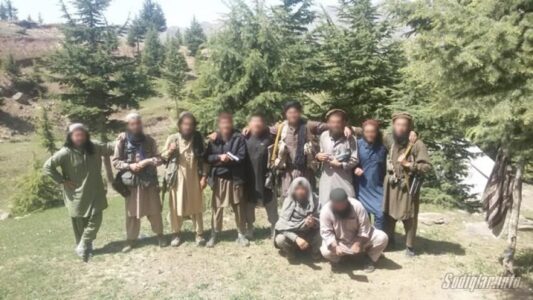
What is the Islamic Jihad Union?
The FBI is reportedly investigating whether Tamerlan and Dzhokhar Tsarnaev, the brothers of Chechen descent suspected of carrying out the deadly Boston Marathon bombings on Monday, have links with the Islamic Jihad Union rooted in central Asia. Chechnya, which has a predominantly Muslim population and fought two wars attempting to split from Russia, has attracted Islamic extremist groups. Where does the IJU fit in?
“They’re a group that’s been a source of constant worry—and worth monitoring” in recent years, said Bruce Hoffman, director of Georgetown University’s Security Studies program. “But they never raised their heads to an extent where we really paid a lot of attention to them, where they were a major threat in their own right.”
WHEN DID IT START?
The IJU splintered from another group that began in Uzbekistan–the Islamic Movement of Uzbekistan—in the early 2000s. Both groups want to overthrow the authoritarian secular government there and turn it into an Islamic state, but the IJU split because they felt the IMU was too focused on Uzbekistan issues, and it wanted to focus on global jihad, according to Hoffman.
WHERE IS IT BASED?
After Uzbekistan’s authorities went on the hunt for IJU fighters after high-profile terror attacks there, the group moved its base of operations to Pakistan’s lawless border areas along the border with Afghanistan.
WHAT IS IT KNOWN FOR?
The group first became notorious for headline-grabbing attacks in its native Uzbekistan. In 2004, it claimed responsibility for a slew of suicide bombings targeting local government offices (and a crowded bazaar) in Tashkent and Bukhara, killing 47 people. In July of that year, it bombed the U.S. and Israeli embassies there, killing at least two people and wounding others—which “cemented [its] status as a real terrorist threat in Central Asia,” according to the National Consortium for the Study of Terrorism and Responses to Terrorism (START), based at the University of Maryland. The following year, the U.S. State Department designated the IJU as a Foreign Terrorist Organization.
WHERE DOES IT OPERATE NOW?
The terror group is active in Afghanistan and Pakistan, according to the National Counterterrorism Center, where it operates alongside the Taliban-affiliated Haqqani network, which has carried out spectacular attacks against U.S. troops and interests in Afghanistan. The group also made headlines in Germany after American and German security agencies foiled its plot to bomb U.S. army facilities and other places in 2007. Four men made up the IJU’s so-called “Sauerland Cell”: Two German converts to Islam and two Turkish citizens, some reportedly trained in camps along the Pakistan-Afghanistan border, according to the Jamestown Foundation.
WHAT’S ITS MISSION?
The IJU has not yet outlined a mission statement or its goals. START analyzed some past statements to get a glimpse of their philosophy and reasons for fighting. After the 2004 attacks in Uzbekistan, the group hailed the group of young Muslims who “executed martyrdom operations that put fear in the apostate government and its infidel allies, the Americans and Jews. … These martyrdom operations that the group is executing will not stop, God willing. It is for the purpose of repelling the injustice of the apostate government and supporting the jihad of our Muslim brothers in Iraq, Palestine, Afghanistan, the Hijaz, and in other Muslim countries ruled by infidels and apostates.”
DOES IT HAVE LINKS TO OTHER TERROR GROUPS?
“They are among al-Qaida’s remaining close allies,” Hoffman said. “They could not have existed or survived in Pakistan without al-Qaida’s support.” Officials have also speculated on those ties, according to START, because of the sophisticated nature of its attacks and targets. Separately, The Long War Journal last year reported the IJU released video showing its fighters cooperating with Afghan Taliban. The video, according to the SITE Intelligence Group, which translated the videos, shows fighters receiving training in heavy weapons and explosives at a camp–and then using their training in strikes against the U.S.-led coalition in Afghanistan.
WHO IS PART OF IT?
The group, estimated to have only a few hundred fighters, is composed primarily of Central Asians, Turks, and Germans, according to the Long War Journal. “They were able to recruit German jihadis and establish a sort of infrastructure in Germany,” Hoffman said. A common language links them to the Turks.
The Journal also notes that Americans have also joined the group and two–Abu Ibrahim al Amriki and Sayfullah al Amriki–have been featured prominently in its propaganda in recent years. U.S. airstrikes in Pakistan’s tribal region have reportedly targeted the group, killing a former leader, Najmuddin Jalolov, in 2009.





